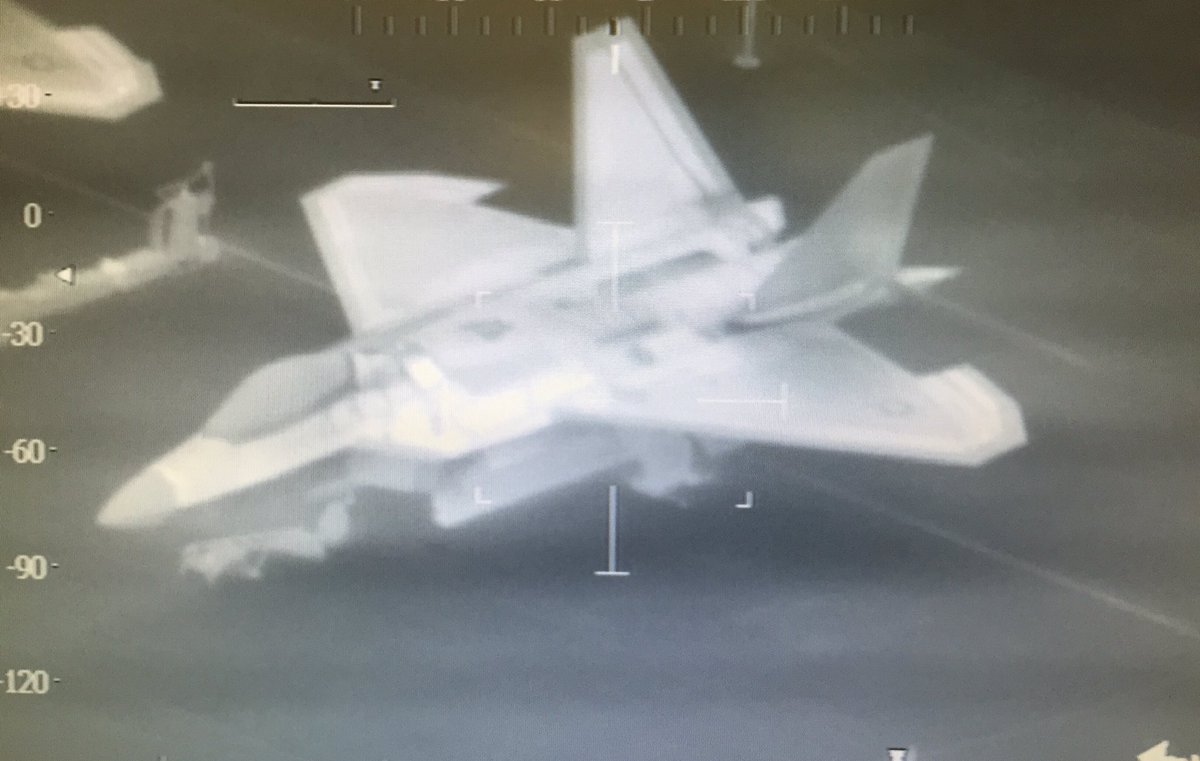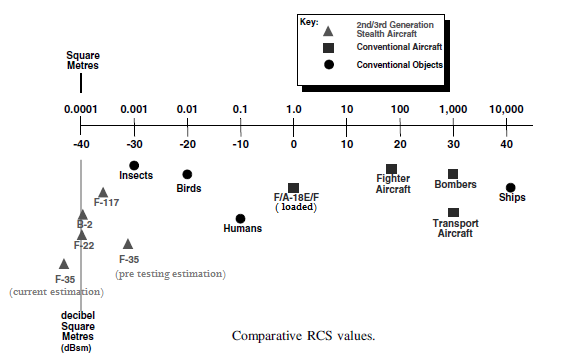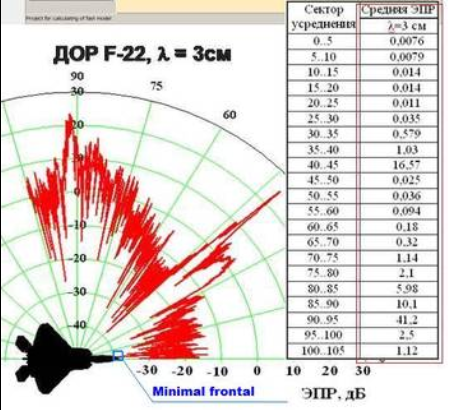УППСССС
Журнал the aviationist

This is what the F-22 Raptor stealth jet looks like through the thermal camera of a crime-fighting helicopter
The above image was posted by the National Police Air Service helicopter serving the South West of England.
It’s a screenshot from the thermal camera used by the EC-135 of the NPAS, based at Filton Aerodrome, west of Swindon, and shows one of the U.S. Air Force F-22 Raptor jets that deployed to RAF Fairford to take part in the Royal International Air Tattoo airshow, on the ground, at RAF Fairford, UK.
The photo is somehow funny, as it depicts the stealth 5th generation jet more or less as it would look like in a combat flight simulator, and interesting, because the IR camera caught the parked Raptor’s heat signature more or less in the same way an infra-red search and track (IRST) systems would perform passive detection of a radar evading plane.
In fact, F-22s and other stealth planes have literally no (or extremely little) radar cross-section (RCS) but they do have an IR signature. This means that they can be vulnerable to small, fast non-stealthy planes that feature low observable coatings and using their IRST sensors, hi-speed computers and interferometry, to geo-locate enemy LO (low observability) aircraft.
Indeed, there are certain scenarios in which IRST and other tactics could greatly reduce the advantage provided by radar invisibility and this is one of the reasons why USAF has fielded IRST pods to Aggressors F-16s in the latest Red Flags as proved by shots of the Nellis’s Vipers carrying the Lockheed Martin’s AN/AAS-42.
This type of system, also carried by F-15E Strike Eagles, and equipping some other modern combat planes, including the Euro-canard Eurofighter Typhoon or Dassault Rafale, lets the aggressor passively look for the IR signature of the enemy stealth fighter.
According to some pilots who have fought against the F-22, the IRST can be extremely useful to detect “large and hot stealth targets” like the F-22 (or the even hotter F-35) during mock aerial engagements at distances up to 50 km. Anyway, that’s another story.
For the moment enjoy a cool and unsual shot of the Raptor, that has been one of the highlights of this year’s RIAT.
Вышеупомянутое изображение было опубликовано вертолетом национальной полиции по обслуживанию воздушных судов, обслуживающим юго-запад Англии.
Это скриншот от тепловой камеры, используемой EC-135 NPAS, расположенной на аэродроме Филтон, к западу от Свиндона, и показывает один из самолетов ВВС США F-22 Raptor, который был развернут в RAF Fairford для участия в Royal Международная авиашоу Air Tattoo, на земле, в RAF Fairford, UK.
Фотография как-то смешна, так как она изображает стюард 5-го поколения более или менее, как это было бы похоже на симулятор боевого полета, и интересным, потому что ИК-камера поймала сигнатуру тепла припаркованной Раптора более или менее таким же образом, как инфракрасная - поиск и отслеживание (IRST) системы обеспечит пассивное обнаружение плоскости уклонения радара.
Фактически, F-22 и другие скрытые самолеты имеют буквально нет (или крайне мало) поперечное сечение радара (RCS), но у них есть ИК-подпись. Это означает, что они могут быть уязвимы для небольших, быстрых не скрытых самолетов, которые имеют низкие наблюдаемые покрытия и используют их датчики IRST, высокоскоростные компьютеры и интерферометрию для геолокации самолета LO (с низкой наблюдаемостью).
Действительно, есть определенные сценарии, в которых IRST и другие тактики могут значительно снизить преимущество, обеспечиваемое невидимостью радара, и это одна из причин, по которой USAF предоставил IRST-контейнеры для F-16 Aggressors в последних красных флажках, что подтверждается снимками Гадюки Неллиса, несущие AN / AAS-42 от Lockheed Martin.
Этот тип системы, также выполняемый F-15E Strike Eagles, и оснащение некоторых других современных боевых самолетов, в том числе Euro-canard Eurofighter Typhoon или Dassault Rafale, позволяет агрессору пассивно искать ИК-подпись вражеского истребителя-невидимки.
По мнению некоторых пилотов, которые сражались против F-22, IRST может быть чрезвычайно полезным для обнаружения «больших и горячих целей невидимости», таких как F-22 (или даже более жаркий F-35) во время ложных воздушных сражений на дистанциях до 50 км. Во всяком случае, это еще одна история.
На данный момент наслаждайтесь прохладным и неопасным снимком Raptor, который был одним из главных моментов RIAT в этом году















